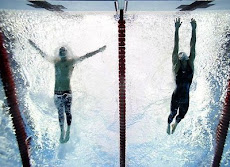
In this part 1 of hypertrophy, I will focus on the physiology and anatomy of how and why our muscles grow through training. In parts 2 and 3, I will focus on the training needed for maximum hypertrophy and the nutritional demands and supplementation.
There are two ways that a muscle can grow and increase in its cross-sectional area (CSA). The increase in whole muscle CSA is primarily attributed to an increase in individual muscle fiber CSA. The other way of increasing muscle CSA is fiber hyperplasia, or the increase in number of muscle fibers within a certain muscle. This is still an ongoing debate within the topic of muscle hypertrophy (the fiber hyperplasia that is).
Individual fiber hypertrophy is a result an increase of protein synthesis (creation or building of more). Protein synthesis is always changing but the rate at which it changes is a result of the net gains of protein synthesis and protein degradation. Resistance training results in a net protein synthesis (Synthesis > Degradation).
During the exercise, degradation is higher than synthesis, but after exercise, during recovery, the synthesis increases and a net protein gain is the result. So adequate recovery is vital in gaining muscle mass (see article on exerQ – Strength training and recovery times). It involves an increase of contractile proteins actin and myosin (within myofibrils) and an increase in the myofibrils themselves. Other proteins such as structural proteins titin and nebulin for example also increase proportionally. A 2002 study by Roth et al. showed than resistance training alters up to 70 genes that almost all result in up regulation of muscle growth and down regulation of growth inhibitory factors.
Fiber hyperplasia has been shown to occur in animals but there is limited research and evidence that it occurs in humans. It has been shown to occur in animals under very high intensity resistance training. It has been shown that well trained athletes possess more fibers than untrained but it is uncertain whether or not it is to do with natural genetics or induced changes from training. Hyperplasia therefore cannot be thought of as a major contributor to muscle hypertrophy as there is little evidence of it in humans and if there is, it only contributes to > 10% of total hypertrophy.
So overall, individual muscle fiber hypertrophy and an increase in fiber CSA is the main reason for muscle mass increases following correct hypertrophy training periods.
JJ
check out these books
Essentials of strength training and conditioning 3rd edition - Baechle and Earle
Physiology of sport and exercise 4th edition - Wilmore, Costill, Kenney




















No comments:
Post a Comment